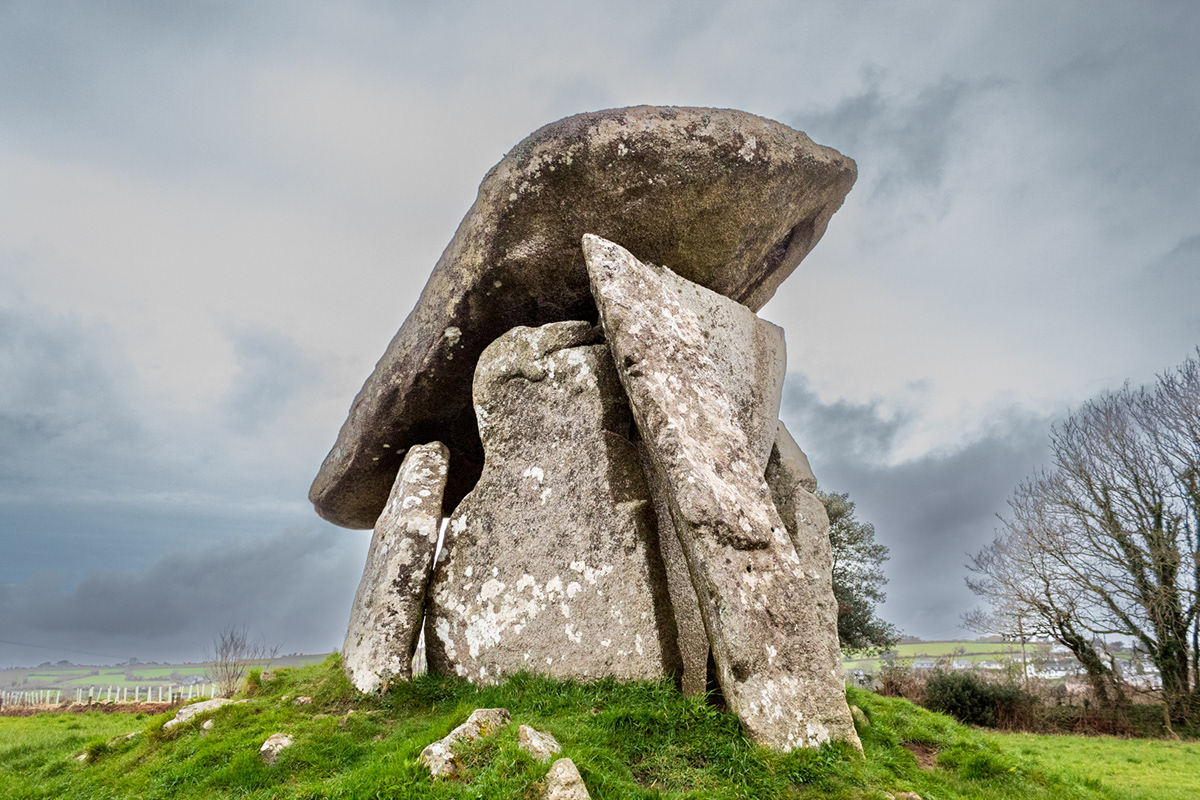_______________________________________________________________________
A study of
Trethevy Quoit
Known locally as "the giant's house".
Standing 9 feet (2.7 m) high, this magnificent 5000-year-old
ancient structure consists of Six standing stones capped by a large slab.
Visit Date March 2024
_______________________________________________________________________

Walking up to this structure, it is in a field close to some modern houses you do not get a feel of the size of this structure but as you approach the magnificence of this site overwhelms you.

There are many of these burial sites in the UK and Cornwall has a large number of them.
Like many other portal structures, Trethevy Quoit would have been originally covered by a mound.
In the 19th century, William Copeland Borlase studied the site and made drawings of it.
A later investigation of the remnants suggests a mound diameter of almost 6.5 metres.
It is impossible to tell if stones have been removed from the site but the remaining seven stones a and an estimated 10.5-ton cover slab were inside the mound.

There are some unusual aspects of Trethevy Quoit, not only does it have 6 supporting stones forming its internal chamber, but it also has an antechamber at the 'front'. The only other Cornish quoit to boast two chambers is Lanyon Quoit.
Particularly interesting is the circular hole cut in the highermost corner of the capstone. Speculation has informed us that the hole could have been used for astronomy. The movement and settling over the millennia that have passed means it is impossible to prove, but it is peculiar and thought to be unique to this megalithic site.

The massive capstone sits at a steep angle, and this is unlikely if this was the capstone's original position. At the lower side of the capstone, five small hollows can be found.
The entrance stone at the front in most portal structures can't be moved. however, Trevethy Quoit is a rare exception here, because a small rectangular stone moving at the bottom right of the front allows access to the chamber.
There is a rectangular cut-out at the side of the upright stone that forms the front of the main chamber it is unclear if this is a later modification of if it was used and an entrance this is not seen on any other Cornish sites.

Trethevy Quoit was first mentioned in 1584 by John Norden, in a topographical and historical account of Britain.
He described it as “A little howse raised of mightie stones, standing on a little hill within a fielde”

In Cornish mythology, the monument is known as the Giant’s House and was believed to have been created by this fabled race.
It also like many other structures in Cornwall and indeed Wales it has links with King Arthur legend and is believed to have been magically built by Merlin.
Additional information:-
A Cromlech or Dolmen is an ancient underground tomb typically built with several large upright stones and a capstone on top. In its day, the whole thing would have been covered by a mound of earth. In some parts of the UK especially in Cornwall these structures are called Quoits.
Most date from the Late Neolithic period (4000–2000 BC)
Thank you for viewing my project
